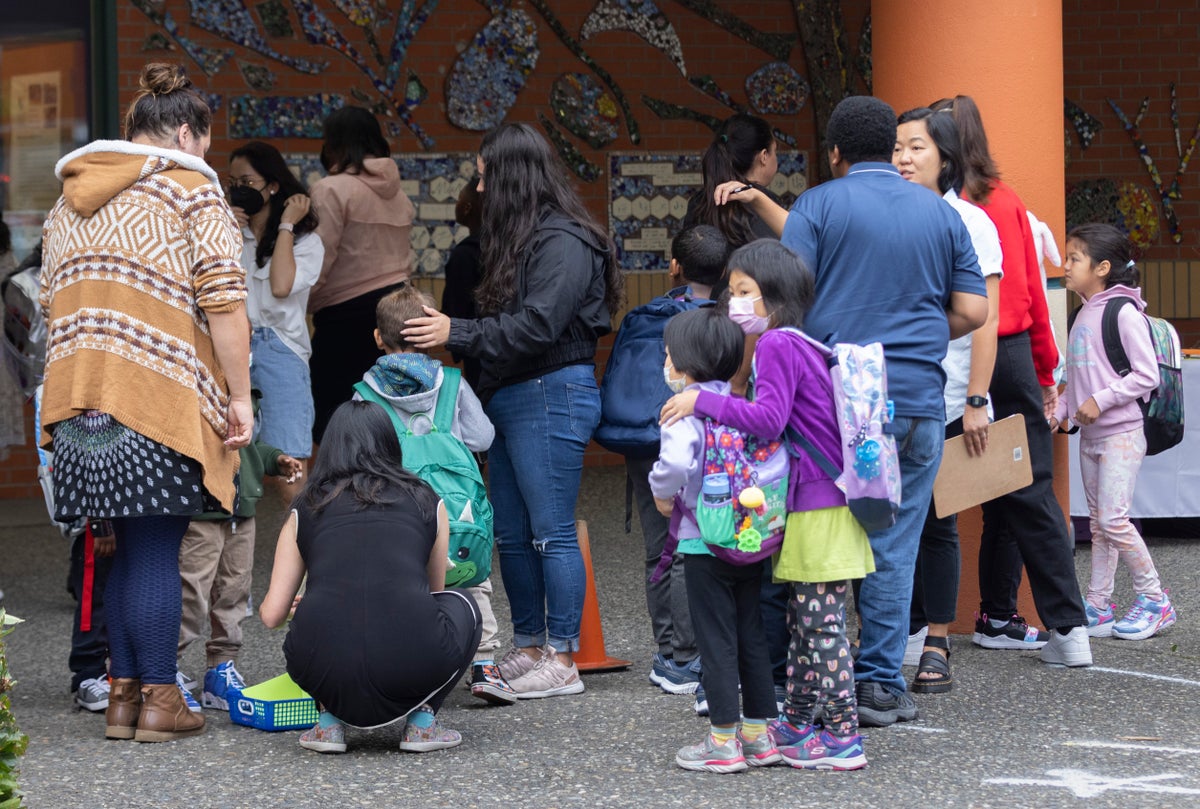
Teachers, administrators and parent volunteers welcomed children back to school in Seattle on Wednesday following a weeklong educators strike that delayed the start of classes.
Seattle Public Schools and the Seattle Education Association announced Monday night that they had reached a tentative agreement on a new contract, and the union's membership voted Tuesday to suspend the walkout pending ratification of the contract.
It's a three-year deal that will maintain or in some cases improve ratios of special-education or multilingual students to staff, add baseline mental health staffing in all schools, and raise pay above inflation markers, the Seattle Education Association said.
“We should be incredibly proud of what we accomplished together,” the union said on its Twitter feed. “We won a great tentative agreement and started an important conversation with our community about supporting our students."
The strike began Sept. 7, which was supposed to be the first day for approximately 49,000 students in the district. While 95% of voting union members approved the strike, just 57% voted in favor of Tuesday's resolution to suspend it, the union said.
Picketing teachers said their main concern was educational and emotional help for students, especially those with special needs or learning difficulties that have been exacerbated by the pandemic.
“This was an incredible effort by both sides, and we put the needs of our students first,” Superintendent Brent Jones said in a video message to families.
Teachers in the city have seen healthy raises since their last strike in 2015, with many making more than $100,000, thanks largely to a new state education funding model. The union had said it was primarily focused on winning raises for its lower-paid members, including instructional assistants and front office staff. Paraeducators in Seattle Public Schools start at $19 an hour — nowhere near enough to afford to live in the city, many say.
The district had sought to increase the amount of time disabled children spend in general education classrooms, and also to eliminate ratios dictating how many students may be assigned to each special-education professional. The district said that would allow it to focus on student needs rather than fixed staffing ratios, but teachers worried it would mean less support, higher case-loads and less time to spend with each student.
The tentative agreement includes a raise of 7% across the board in the first year, 5.5% of which is a state-funded increase tied to inflation, plus a $1,500 bonus for lower-paid hourly workers, including office staff, family support staff and instructional assistants. There is a cap on caseloads for mental health staff.
It also would provide additional money for libraries in schools that serve more students from low-income families and might not have well-funded parent-teacher associations to supplement state funding for libraries.
Another issue for Seattle Public Schools is declining enrollment. Projections show Washington state's largest school district losing several thousand students over the next few years, which officials say translates into significant budget deficits.
Districts around the country have faced labor challenges as the pandemic put extraordinary stress on teachers and students.
Teachers in Minneapolis, Chicago and Sacramento walked out earlier this year before securing new agreements.







